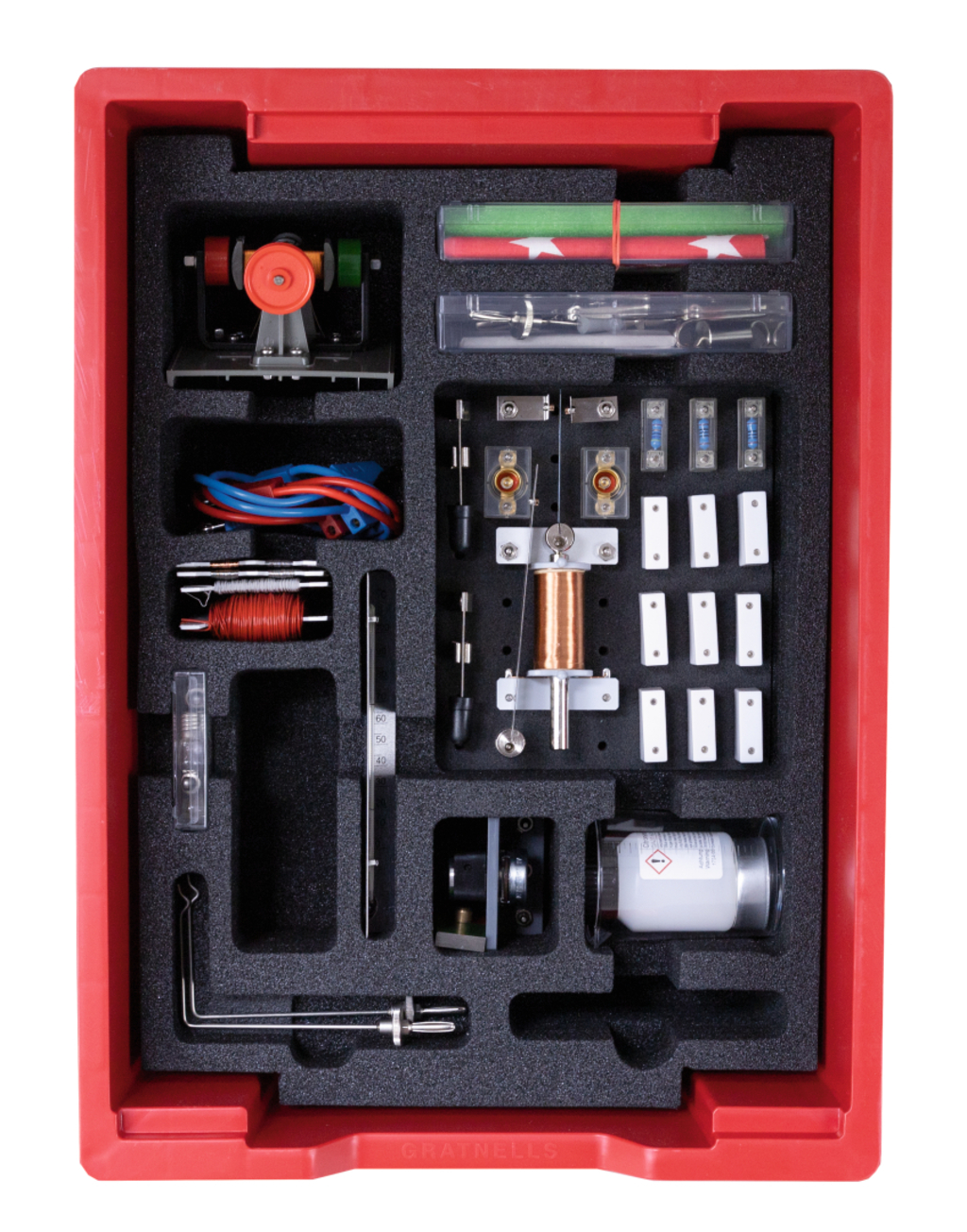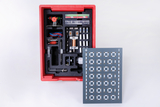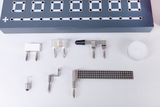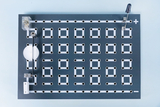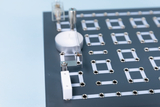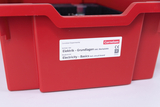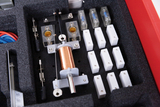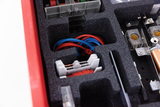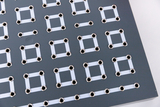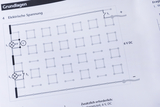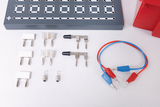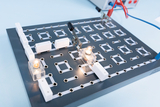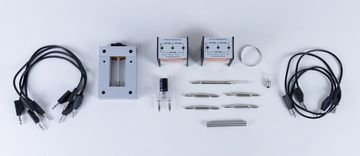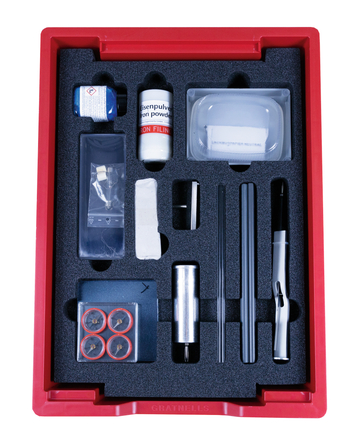Students kit Electricity – Basics including circuit board
Experiments on the flow of electricity and basic electrical circuits
Experiments on the effects of electricity and explorations of selected technical applications
The students build an electrical circuit.
Test to determine the conductivity of different substances.
Students examine the power line of various liquids.
In the experiment, it is observed what differences there are in the voltage when one or more incandescent lamps are switched on.
This experiment shows the effect of resistance on the current and the lamp associated with it.
This experiment shows the effect of resistance on the current and the lamp associated with it.
The experiment shows the relationships between the quantities U=voltage, I=current and R=resistance.
In this experiment, the series connection of resistors is investigated.
The experiment investigates the effect of resistors, in a parallel connection, on the current.
The experiment shows the effect of an adjustable resistance on an incandescent lamp.
In this experiment it is observed what effect it has on a lamp when the voltage changes.
This experiment is for measuring specific resistances of different materials.
This experiment examines the conductivity of a wire when it is cold and when it is heated.
In this experiment, the system of a bridge circuit and its effect on the voltage of an incandescent lamp will be explained to you.
In this experiment, the resistance measurement is examined using an ammeter.
The experiment shows to what extent a parallel connection or a series connection influences the electrical output.
In this experiment, the heat development of a current-carrying heating wire is observed.
This experiment illustrates how electrical energy is converted into thermal energy.
This experiment shows how electrical energy is converted into light, like an incandescent lamp.
The experiment deals with the structure of a circuit, with a bimetallic switch, and its influence on the circuit.
In this experiment, the position of a hooked weight is observed, which is suspended from a current-carrying conductor. From the observations, conclusions are drawn about the change in the position of the hook weight.
In this experiment, the effect of the magnetic field of a conductor is observed.
This experiment shows the effect of an electromagnet and is compared with that of a permanent magnet.
In this experiment, the effect of the relay is observed.
This experiment shows the structure of a self-interrupter, how it works and what processes take place in it.
This experiment illustrates the principle of an electric motor and how it works.
By applying a voltage to the electric motor, you get a rotary movement.
Here, electrical energy is converted into mechanical energy.
It is investigated what difference there is when connecting several incandescent lamps in a row and what effects this has on the current.
In this experiment, the parallel connection of incandescent lamps is investigated and what effect this has on the circuit.
In this experiment, the difference between a power and a resistance wire is examined.
The experiment shows how a fuse works and makes sense in a circuit.
- 1 × Thermometer student type –3°C to +103°C
- 1 × Beaker, plastic, 100 ml (graduated)
- 1 × Copper wire with insulation (20 m)
- 1 × Heating wire , covered, 0,20 mm Ø (20 m)
- 1 × Universal 4mm-plug-breadboard
- 1 × Magnetic needle 75 mm
- 2 × Plug lead, 25 cm, red
- 2 × Plug lead, 25 cm, blue
- 2 × Carbon electrode
- 1 × Citric acid-1-hydrate 25g
- 1 × Carton for SEG (large tray)
- 1 × Plastic box, 140x50x25mm
- 1 × SEG Lidfoam, grey 10 mm
- 1 × Foam insert for 23210 390/275/105 mm
- 1 × Plastic box, smooth 64x64x15 mm
- 1 × Foam insert with bores, 160/140/20mm
- 1 ×
- 2 × Crocodile clip with 4 mm plug
- 1 × Coil with core on 4mm- plugs
- 1 × Armature with tungsten contacts and plugs
- 1 × Pair of contact plates with plugs
- 2 × Lever switch arm on plug
- 2 × Knife switch spring contact with plug
- 1 × Bimetallic strip on plug
- 2 × Electrode support on plug
- 1 × Electric motor with plugs
- 1 × Constantan and nickel- chromium wire 10 m each
- 1 × Copper and iron wire 10 m each
- 1 × °Material patterns, set of 14 pcs.
- 1 × Magnet bar/brass bearing AlNiCo, 72 x 60 x 6 mm
- 1 × Needle support with plug
- 2 × Lamp holder MES on 19 mm plug-in element
- 1 × Bulb, MES, 1,5 V/0,15 A set of 10 pcs.
- 1 × Bulb, MES, 3.8V/0,07A set of 10 pcs.
- 1 × Bulb, MES, 6 V/0,3 A set of 10 pcs.
- 9 × Bridge plug, white 4 mm
- 1 × Resistor, 47 Ohms 1W plug-in element
- 2 × Resistor, 100 Ohm, 1 W plug-in element
- 1 × Storing tray, deep, red
- 1 × Lid for 75028 + 75038
- 1 ×
- 1 ×
